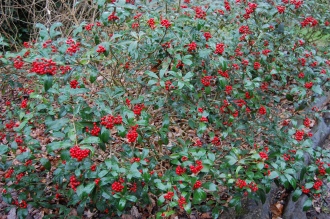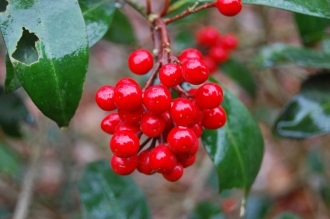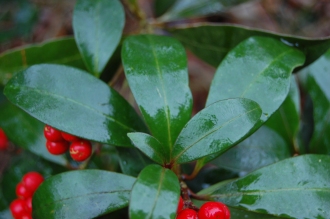Position: Partial shade to full shade
Flowering period: Late spring
Soil: Moist, well drained, slightly acidic
Eventual Height: 1m
Eventual Spread: 90cm
Hardiness: 7a, 7b, 8a, 8b, 9a, 9b
Family: Rutaceae
Skimmia japonica subsp. reevesiana is an evergreen shrub with a dome shaped habit. Its glossy dark green leaves are elliptic with an entire margin and up to 10cm long. Its hermaphrodite white flowers appear in panicles, are fragrant and unlike the species, Skimmia japonica, Skimmia japonica subsp. reevesiana is self fertile. Its red fruit are small ovoid berries, appear in bunches and may persist on the plant throughout the winter months.
The species Skimmia japonica, commonly known as Skimmia, is native to Japan. This plant is mildly toxic, large amounts must be ingested to cause harm.
The etymological root of the binomial name Skimmia is derived from Skimmi, the Japanese name for the plant. Japonica is derived from the Latin meaning ‘from Japan’. Reevesiana is named after John Reeves Jr. (1774 – 1856), an English naturalist and plant collector.
The landscape architect may find Skimmia japonica subsp. reevesiana useful as a low growing, evergreen shrub in shady locations, particularly acidic soils. It may also be used as an informal hedge. Once established this plant is drought tolerant.
Ecologically, Skimmia japonica subsp. reevesiana is attractive to various pollinating insects. The berries are attractive to birds.
Skimmia japonica subsp. reevesiana prefers moist, fertile, humus rich, well-drained soils. It tolerates most pH of soil, although it prefers slightly acidic.
Skimmia japonica subsp. reevesiana requires little maintenance. Pruning, if required should be carried out in spring when the new growth is about to start.








Leave a comment